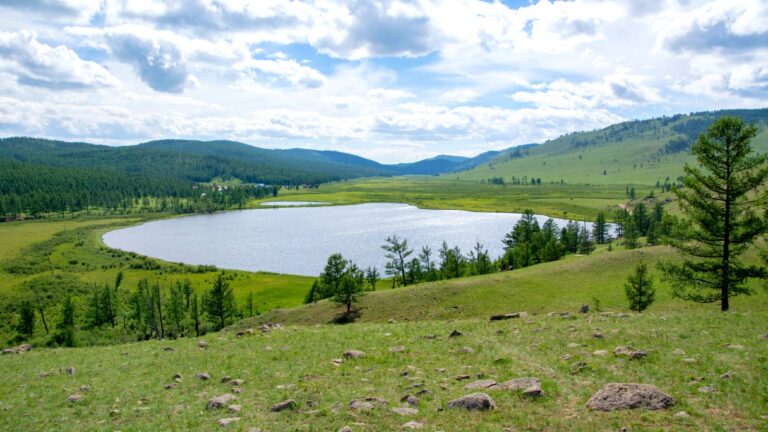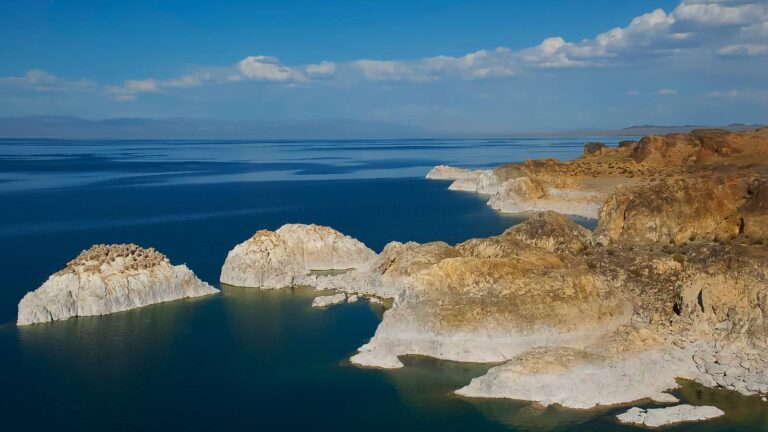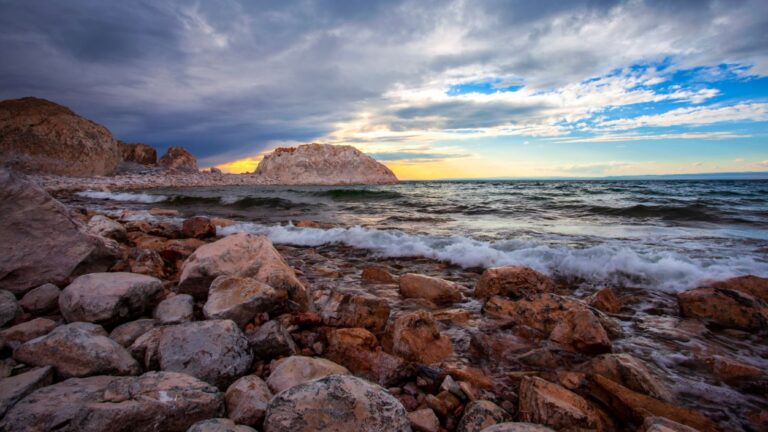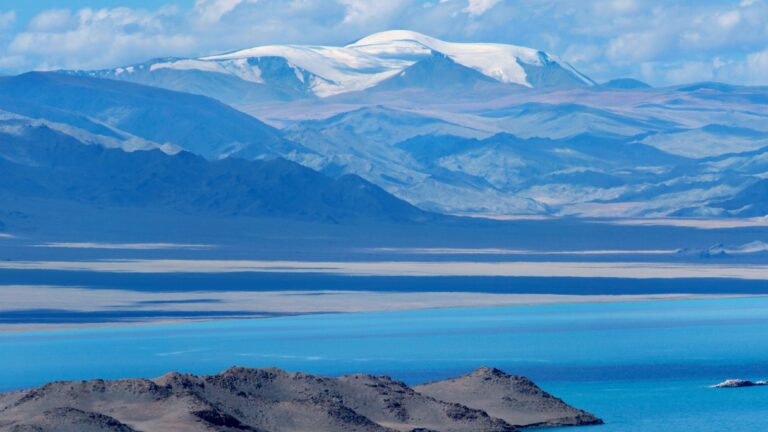Getting There
Uvs Lake is a highly saline lake in Uvs Nuur Basin in Mongolia with a small part in Russia. It is the largest lake in Mongolia by surface area.
What to Expect
Uvs Lake is part of the Uvs-Nuur-Basin compassing different ecosystems. This area ranges from the permanent snowfields in the Turgen mountains over the lakes and wetlands areas up to the desert of Altan Els. The whole area measures 10,688 sq. km. The range lies at altitudes between 2,500 and 4,000m.
In the areas of desert and mountain, rare animals as the Mongolian gerbil, the threatened snow leopard, the wild sheep as well as the Asiatic ibex. Since 1997, the Uvs-Nuur-Basin is recognized as UNESCO biosphere reserve.
At and on the Uvs Lake, more than 220 bird species are counted. Numerous rare and threatened species are among them: Black Stork, Osprey, White-tailed Eagle, Whooper Swan and Black-headed Gull. More than 100 pairs of Spoonbills breed in this region.
Because of this geographical situation, the Uvs Lake is subject to extreme climate fluctuations. Temperatures of – 40 ° C are normal in winter, also – 58 ° C are measured. In summer, the basin warms and the temperatures arrive + 40 ° C. Uvs Lake underlies, compared to locations of the earth at the same altitude, both the coldest and the warmest as well as the driest conditions.
History
This shallow and very saline body of water is a remainder of a huge saline sea which covered a much larger area several thousand years ago.
In 2003, UNESCO listed the Uvs Lake Basin as a natural World Heritage Site. It was nominated as “one of the largest intact watersheds in Central Asia where 40,000 archeological sites can be found from historically famous nomadic tribes such as the Scythians, the Turks and the Huns.
Facilities Available
There are no facilities for tourism.




